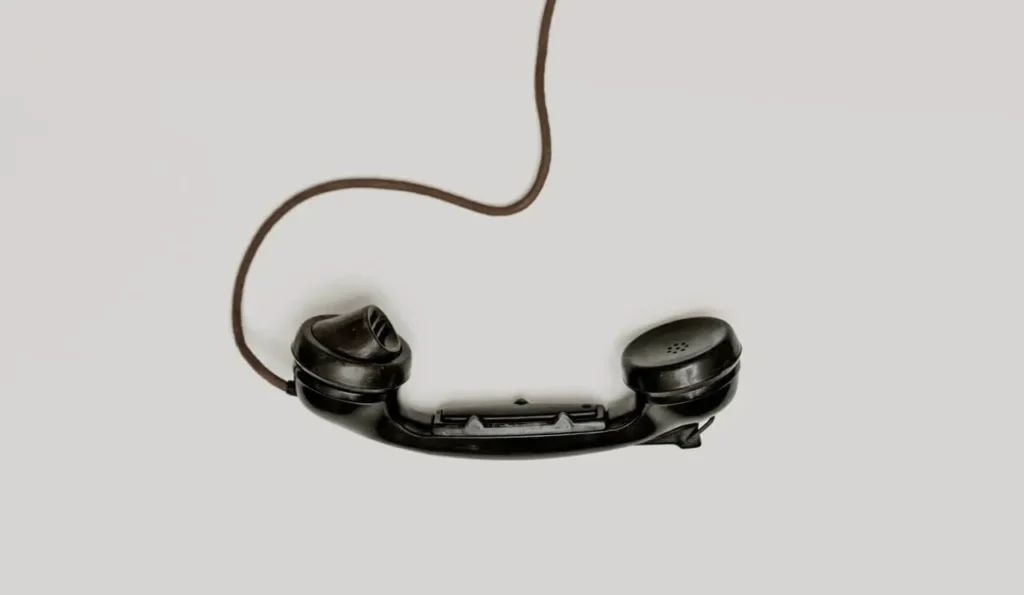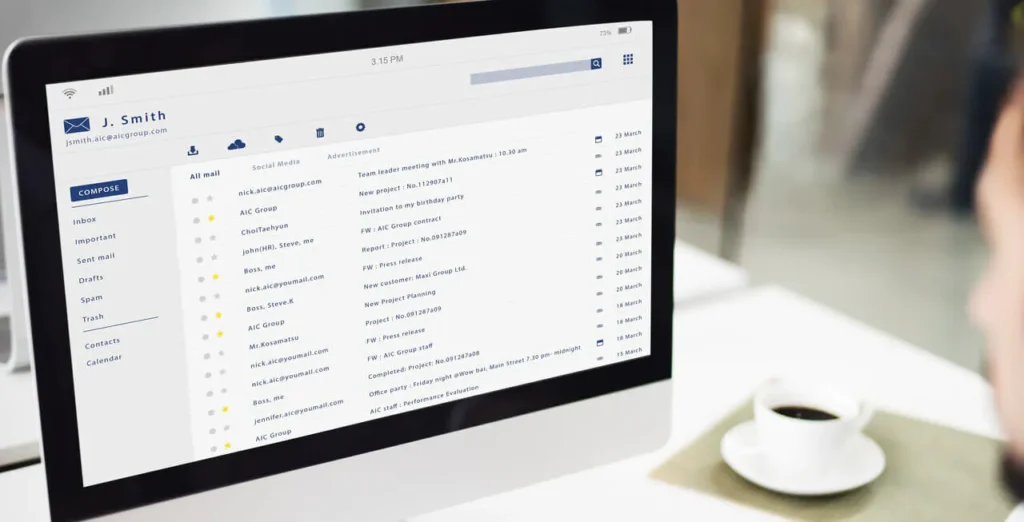Cold Calls vs Cold Emails – Which is Better?
Cold calling and cold emailing are two effective cold outreach methods that are used by marketers today, besides social media. For a good strategy, it is important to choose whether to call or email the prospects and create a successful sales prospecting strategy.
Before we get into it, let’s take a look at what these strategies cover and what are the good and bad sides of both.
Why is Making Phone Calls & Sending Emails Important for Marketing?
Making calls and sending emails are referred to as direct marketing. These strategies are used to market products or services to a specific group of people, a target audience.
However, there are many ways to market and each strategy has its advantages. While cold calling and emailing are effective tools, not all techniques are created equal.
Most strategies by marketers are aimed at increasing the number of response rates. This means that the more effective techniques you use, the better your results will be.
How Cold Emails are Different from Cold Calling
Even though cold calling and emailing are cold outreach methods, there are essential differences when it comes to response rates and conversion rates.
For example, a cold call is way more personal than a cold email due to its invasive nature of gathering information about the prospects down to their phone numbers. On the other hand, it is easier to gather information through a phone call.

What is a Cold Call
Essentially, cold calling is the act of making phone calls to prospective customers without prior knowledge of them. However, there is a lot of research showing that cold emailing is much more effective than cold calling. Some experts believe that up to 88 percent of buyers don’t have anything to do with cold calls.
A cold call is a phone call that is made to a potential customer or client without them having previously expressed interest in the product or service.
Cold call for gathering info
Cold calling has become a widely used strategy because it works well to some extent, particularly with non-customer leads. It’s a way for businesses to find out if there’s an existing market for their product or service. If so, they can create a selling strategy based on their findings.
In addition, businesses can find out who they should contact and what message they should deliver to make themselves the most effective. For example, you would call someone if you have a technical problem and want advice on fixing it. You would address your call by learning as much as possible about the person’s situation and using that to craft your response.

What is a Cold Email
A cold outreach strategy that has revolutionized the way businesses operate is cold emailing. It has changed the way sales were represented and has added value to the time of marketers. Due to its scalability, nowadays cold emailing is one of the best ways to market
A cold email is an email that is sent to a potential customer or client without them having previously expressed interest in the product or service. It is the first email you send to your prospect to let them know you exist.
Cold email for personalization
There are many ways to personalize and create emails that get more responses, which is one of the good sides of cold emails over cold calls. Apart from finding out what works best for delivering tailored messages, doing research for your emails has other benefits for you and your business, as it may create an overall target audience.
Cold Email vs Cold Call
Cold calling and emailing might be weak or strong methods depending on what you aim for in your cold outreach strategy. Here are some pros and cons listed.
Pros of cold calling
Calling your prospect on the phone can be easier for communication as many people prefer talking to writing. If you aim to get your prospect’s view on your product or service and gather the information it is the fastest way to go as it takes more time to answer an email.
Quick to get a response
When your prospects pick up the phone since it is in real-time and fully synchronous, you will be able to get a direct response about the product or the service you are trying to get across – that is if your prospects answer their phone.
It collects the info faster compared to an email as you can simply ask “why” when you get a “no” right there on the phone.
Good for collecting info
If in any way, your sales calls are answered, and you were able to reach your prospect through a cold call, you will be directly speaking to your prospect. This will give you a chance to ask about what they don’t like about the product or the service or the business in general.
One downside of cold emailing is that there are no direct ways to understand the prospects’ ideas about your products unless they have given you feedback. So you can use a cold call if your number one priority is to gather information about the sales process.
Cons of cold calling
The bad sides of calling your leads can decrease the success of your sales strategies and it is important to consider these we have listed below for better results.
Insufficient conversion rate
Let’s say you have collected enough numbers to contact. You have called your prospects and since this is a phone call, they have answered directly. But how will you make sure that your sales pitch is successful?
No matter you are a marketer or a business owner, you aim to get more sales. It doesn’t end after your prospects pick up the phone. Not only is cold calling time-consuming, but it has a bad reputation when it comes to positive response rates.
According to a study on cold calling, only 1 appointment was made out of 209 cold calls, of which only 59 were answered.

Numbers are harder to get than emails
Your sales reps can only call a certain number of people a day. When they’re making a phone call, it will take time because calls are inherently time-consuming as you will have to explain yourself all over again to each prospect.
It is especially harder to make more cold calls when 63% of the sellers say the worst part of their job is to make cold calls, according to a LinkedIn article.
It is hard to be on the phone with people you just met and try to advertise your product or service. A cold call is not liked by many people, it feels invasive – which makes it harder to convert the calls into sales.
It is costly
One of the cons of cold calling is the necessity of having a whole sales team assigned to do cold calls. This part of your sales team will be responsible for doing a certain number of cold calls a day and will be limited to a personal level each employee has.
For getting effective sales reps, you will need to hand-pick every person you hire. They should always be highly energetic and understanding towards your buyer personas on the phone. After all, the reps will represent the company and will contact the prospects directly. Besides sales prospecting, their conversation skills will determine the reputation of your company.
Pros of cold emailing
In short, the ability to scale emails, the convenience of choosing when to answer an email, and the less invasive nature of emails can lead your prospect into replying.
Scalability
Cold emails are amazing for scalability as they let you send 1000 emails daily if possible. In 2022 alone, approximately 333 billion emails are sent per day. We believe email marketing has a huge role in that number. Emails are easier to scale and time efficient.
It is preferred to be the most used cold outreach method out there for sales prospecting. It generates amazing conversion rates as it is the main channel for lead generation for 89% of marketers, even more than social media. Not only that, but it has a higher response rate than cold calling.
Convenient
Cold emails are convenient as well as easy to scale. Not only can you send hundreds of them in a day with the right tools, but you can also use this outreach method to fit everyone’s schedule as it doesn’t take away from your prospect’s time, as for a call your prospect will have to stop what they’re doing and be on the phone, you will be stealing your prospect’s time and not fit into their own desired time. This brings us to our next point.
Written text can be reviewed again
If your prospect does not have the time at the moment you’ve sent your email, they can check it out later. The text is right there, it has been sent to them, and it is in their inbox. That is the power of written text and cold emailing. It is more convenient than a call.
It also brings the opportunity of adding visuals in your emails, if that is a choice of yours. A button on your website will be more attractive than someone on the phone trying to sell you something. Prospects find cold emailing less invasive, more like an offer rather than a pushy conversation.
Also, in B2B conversations, written texts are more formal and can be better for a first impression.
There’s something called follow-ups
When writing your sales emails, one of the best ways to strengthen your email campaigns is to write follow-ups. In case your leads have missed your previous emails or forgot to answer, you can use this outreach method to get their attention without being too annoying – though it is important to know how long should a cold email be as it will determine your strategy to be weak or strong.
Use cold email follow-ups as a part of your marketing strategy to boost your sales. Follow-up emails will increase the chances of getting an answer
Can be forwarded
Word to word, everything can be seen by the next person to the email will be forwarded. It is a powerful way of using technology as nothing will be lost between the first person you reached out to and the next person to hear about it.
By delivering the message as is, an email will provide better communication even though it does not have a direct conversation in real time.

Cons of cold emailing
Even though an email can have many benefits over a cold call, it has downsides. Your marketers must tailor the email perfectly according to your prospect and let them lead the way they write the email through personalization.
Must be written well
The grammar, the punctuation, the proper way to divide paragraphs, writing an intriguing subject line – all might need a bit of skill when it comes to knowing the basics to write an email for marketers. Your company must hire people who have excellent writing skills for email and can get sales through well-written emails.
Luckily you won’t have to worry about cold email outreach since Nureply can fix the most tedious problems for you. Our creative AI can generate amazing icebreakers that will be tailored to your prospect by researching them. It’s important to use the right tools to create amazing first lines and Nureply is the way to go with 30 free credits and 7 days free trial.
Can be deleted right away
Your prospect’s inbox will show them your name or company name, the subject line, and (a bit of) the first line when you send them an email.
Your email has to be personalized perfectly for the prospect, it should be personal to them, and the message must be for them only. It is much easier to get your email to be opened. Otherwise, it will be simply deleted or even worse, marked as spam.
The Problem with Cold Calls
Cold emailing is better than cold calling because it is less intrusive, can be easily personalized, and allows the recipient to respond in their own time. A strong ask, such as offering a trial for your product can feel a bit pushy as you are calling them on their (maybe personal) phone and asking them to try this thing.
Even though a strong ask can be useful on some rare occasions, the prospect can get annoyed rather easily if you were to make a follow-up call. A strong ask can bring about a strong “no” as it is easier to express what you mean in a real conversation on a call.
It used to be a better way to go for sales but as the technology progresses, it is important to keep up with it and focus more on cold emailing rather than phone calls. It is easy to write if you know what tools to use and what to write in an email that can get you sales.

Why Cold Emails Work Better than Cold Calls
While cold calling can be a successful way to reach potential customers in some cases, cold emailing is a more effective way to reach potential customers. An email will be more convenient for your prospect and will lead them to reply.
How to send an effective email
If you are interested in writing an effective email to start your sales prospecting journey, you can take a look at our 7 Pro Tips for Cold Emailing blog post.
It Depends on What You’re Looking For
When we ask “Cold email vs cold call: which is better?”, almost always the answer is cold emails.
Overall, using cold emails instead of cold calls increases sales by providing prospects with information quickly and easily accessible via email platforms. This method works well for target audiences that aren’t particularly busy since they’ll often have time to read through messages and respond appropriately.
Ultimately, whether you use a call or email, choosing which strategy is best for you depends on what kind of prospects you’re targeting and how best to address them via both types of campaigns.
Conclusion: cold email vs cold call
Both cold calling and cold emailing are effective strategies for obtaining customer information, making sales, promoting products, and building relationships with customers. Essentially, it’s vital to have an effective direct marketing strategy for your business.
We recommend cold emails over cold calls for their convenience and have developed an advanced AI that does all the tedious work for you. You can sign up here today!


